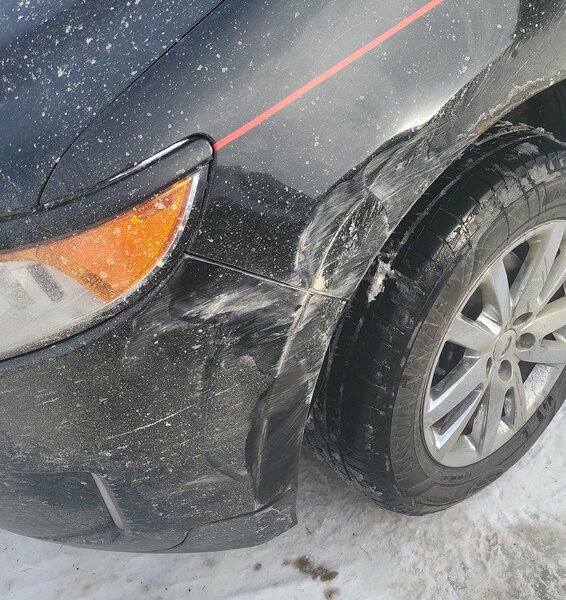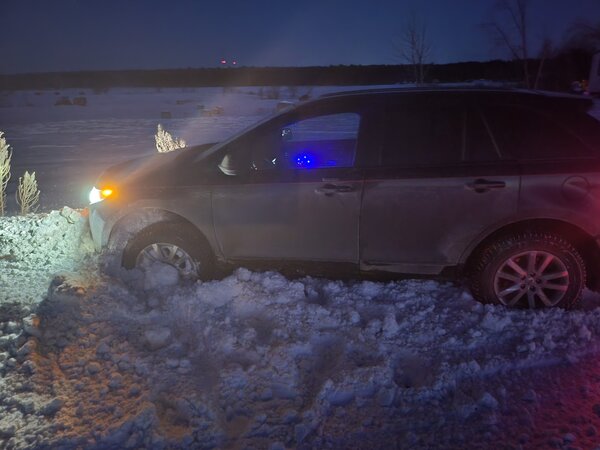-
Images
-
Popular Contributors
-
Posts
-
By Todd Turner · Posted
Good catch didn’t think about it being just one. The right rear never seams hot when front left is very hot. I know brakes used to be set cross/front rear. IDK if still that way. As I said haven’t been a diagnoser been a parts thrower. Thought of air. Bled several times. Forgot to mention I have replaced pins, thinking they were sticking. Caliper easily retracted no force by spreader used hand not a wrench. didn’t see any scoring or rust on piston. Was thinking maybe flapper inside hose. Guess a hose isn’t too expensive worth a try. -
As this is only happening with the front, left brake, it really sounds like the brake fluid is flowing into the caliper (brakes applied) but unable to completely flow out; until it slowly bleeds off when sitting. If so, I'd suspect a sticking brake caliper piston, kink in the brake hose, caliper pins needing greasing or air in caliper.
-
Face up in the cubby to wirelessly charge, or face down because the wireless charger makes your phone overheat. With SYNC 4, there is nothing that can be done on the phone that should be done on the phone while driving. Anything else is for when stopped, and reaching into that cubby is pretty good. Pocket is also a handy place. I don't have Wireless Android Auto in mine, so it has to be plugged in, for around town trips I would love wireless AA and just leave it in my pocket. I might try a current generation dongle for AA/CarPlay.
-
By Todd Turner · Posted
I see, unfortunately I’m better with old straight hydraulic brakes. It was easy hard brake booster went out. Partial to no brakes master. Now they can fail if electrical goes bad. Having issue with the trouble shooting because to get the symptom I have to drive for a half an hour, but symptoms clear when vehicle is shut off for a couple minutes. But codes stay. Leaning towards booster to master clearance causing the brake drag to increase. at the same time having to turn vehicle off and sit a few minutes then feeling brakes release leads me to abs module/electrical, or without vacuum the clearance increases opens ports and allows release still setting the pressure sensor a code. At least you are providing some different insight than most posts I’ve seen. Thank you. starting this journey with spongy brake and finding the ABS circuit faults and the booster leak I’ve changed to much to narrow down to one thing but don’t want to keep throwing parts at it. somewhere I saw reference to checking booster to master clearance but with the flange on master around plunger can’t figure out how to check or even what clearance it should be. -
Oil Filter Inspection Special Tool(s) / General Equipment Oil Drain Equipment Knife Vise Activation Remove the oil filter. Refer to oil change. Drain any excess oil from the oil filter. Use the General Equipment: Oil Drain Equipment Using an oil filter cutter, cut the housing from the baseplate. Remove the support tube and oil filter element assembly from the housing. Separate the oil filter element from the support tube. Use the General Equipment: Knife Use the General Equipment: Vise Twist the top and bottom endcaps and separate the top or bottom endcaps from the support tube. Inspect the support tube for debris. Check for metal debris, fine or course, that would indicate a catastrophic failure of the engine. Expand the oil filter element. Normal element, a few particles of metal is normal. Bearing damage, large amount of bearing metal is not normal. If the oil filter inspection shows excessive metal debris to indicate catastrophic failure of the engine, REMOVE the engine oil pan and inspect the main and connecting rod bearings for damage. DISASSEMBLE the engine to determine the extent or source of the damage. REFER to Engine Oil Pan. REFER to Removal. REFER to Bearing Inspection. REFER to Engine Disassembly. © Copyright 2025, Ford Motor Company. Oil Filter Inspection - Workshop Manual General Procedure.pdf
-
Once again, perhaps unnecessary due to your replacement of the Master Cylinder, but with emphasis below, and additional PDF Workshop Manual sections... Brake Master Cylinder Compensator Ports The purpose of the compensator ports in the brake master cylinder is to supply additional brake fluid from the master cylinder reservoir when needed by the brake system due to brake lining wear and allow brake fluid to return to the master cylinder reservoir when the brakes are released. The returning brake fluid creates a slight turbulence in the master cylinder reservoir. This is a normal condition and indicates that the compensator ports are not clogged. Clogged compensator ports may cause the brakes to hang up or not fully release. Good luck! Brake System - Principles of Operation - 2013 Edge Workshop Manual.pdf Front Disc Brake - Specifications - 2013 Edge Workshop Manual.pdf Brake Caliper - Removal and Installation - 2013 Edge Workshop Manual.pdf Component Bleeding - General Procedures - 2013 Edge Workshop Manual.pdf Brake System Bleeding - General Procedures - 2013 Edge Workshop Manual.pdf
-
By Todd Turner · Posted
Yes programmed ABS module with original. Thought I may have messed it up so downloaded from Ford service and redid. Don’t hear anything seams front left gradually applies till it’s impossible to drive. If I turn vehicle off open door and sit for several minutes you can feel the brakes release. Have some reading to do. -
Because there's so many conflicting reports on the use of MaxLife in Fords I err on the side of caution and stick with Mercon LV. Also it's not a huge saving with the MaxLife considering how infrequent we change the trans fluid. I know MacT uses the MaxLife. Valvoline Multi-Vehicle (ATF) Full Synthetic Automatic Transmission Fluid 1 GA, Case of 3 $51.00
-
Anyone here use MaxLife?
-
-
Topics










